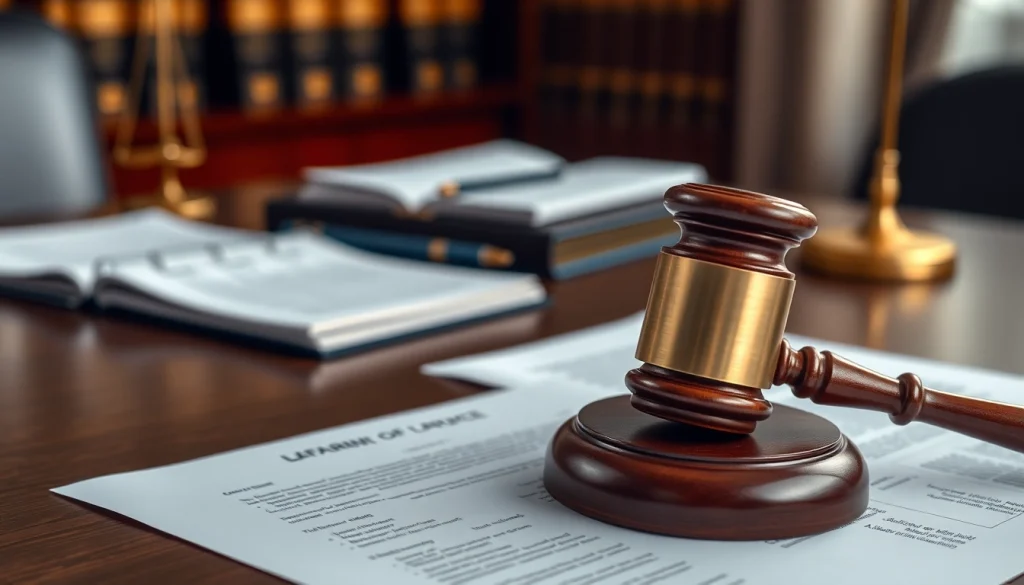
Understanding PFAS: Health Risks and Legal Implications
What Are PFAS Chemicals?
Per- and polyfluoroalkyl substances (PFAS) are a group of more than 4,700 man-made chemicals used in various industrial applications and consumer products. Commonly known as “forever chemicals,” PFAS are characterized by their strong carbon-fluorine bonds, which make them incredibly resistant to degradation in the environment. These compounds have been widely used in products such as non-stick cookware, water-repellent fabrics, firefighting foams, and food packaging due to their ability to repel water and oil. The widespread use of PFAS has contributed to their presence in the environment, as these chemicals accumulate over time, leading to significant public health and ecological concerns.
Health Effects of PFAS Exposure
Research has shown that PFAS exposure may lead to numerous adverse health effects. Studies indicate these chemicals can disrupt hormonal systems and affect the immune system, leading to reduced vaccine efficacy. Additionally, PFAS exposure has been linked to various cancers, including kidney and testicular cancer, as well as liver damage, thyroid disease, developmental delays in children, and high cholesterol levels. Given the ubiquity of PFAS in the environment, individuals may be unknowingly exposed through contaminated drinking water, food, and products, underscoring the importance of understanding the health risks associated with these substances.
Legal Context Surrounding PFAS Contamination
The legal landscape surrounding PFAS contamination is rapidly evolving. Lawsuits have been filed against manufacturers and industries that have historically used PFAS, alleging that these entities have knowingly caused environmental contamination and health risks. Federal and state regulations are being introduced to address the management of PFAS, with many municipalities taking action against polluters. The legal ramifications have resulted in growing litigation focused on compensation for individuals harmed by PFAS exposure, activation of environmental cleanup processes, and stricter regulations on the use of these chemicals.
How PFAS Lawsuits Work
The Process of Filing a PFAS Lawsuit
Filing a PFAS lawsuit involves several essential steps. Initially, individuals affected by PFAS exposure should gather evidence demonstrating the link between their health issues and PFAS contamination. This may include medical records, employment history, and details about exposure routes, such as water sources or living near industrial sites. Next, potential plaintiffs can consult PFAS lawsuit attorneys specializing in environmental law. These attorneys can provide guidance on whether to pursue a lawsuit and how to build a compelling case. Once the necessary documentation is prepared, the lawsuit is filed in a jurisdiction that addresses environmental damage or personal injury claims. The litigation process can involve discovery, depositions, and potentially a trial where evidence is presented to support the claims against the defendants.
Key Legal Considerations for Plaintiffs
Several key legal considerations must be addressed when pursuing a PFAS lawsuit. Plaintiffs must establish a direct connection between PFAS exposure and their specific health issues, which often requires expert testimony and scientific evidence. Furthermore, understanding the statute of limitations for filing claims in various jurisdictions is crucial, as these timelines can vary significantly. Additionally, potential plaintiffs should be aware of the burden of proof required to succeed in these cases, which may demand substantial investment in legal resources and expert consultations. Lastly, plaintiffs should consider the possibility of class-action lawsuits, which can provide a more streamlined path for compensation if many individuals have experienced similar harms due to PFAS exposure.
Common Defenses Used in PFAS Cases
In PFAS lawsuits, defendants may employ several common legal defenses. One major defense is the argument that the plaintiff’s health issues are unrelated to PFAS exposure, often citing alternate causes such as genetics, lifestyle choices, or other environmental factors. Additionally, some defendants may contend that they complied with existing regulations during the time of PFAS use, asserting that they cannot be held liable for following industry standards. Another potential defense involves questioning the validity of scientific evidence linking PFAS to health issues, which requires robust counterarguments from the plaintiffs’ legal team. Understanding these defenses is critical for plaintiffs, as it shapes the strategic approach their attorneys will take during litigation.
Choosing the Right PFAS Lawsuit Attorneys
Attributes of Experienced PFAS Attorneys
Selecting the right attorney to handle a PFAS lawsuit is crucial for achieving a successful outcome. Key attributes to look for include experience in environmental law, particularly in cases involving toxic chemical exposure. An attorney with a proven track record in PFAS litigation will understand the complexities of these cases and possess the resources necessary to navigate the legal landscape effectively. Communication is also essential; an attorney should be transparent about the legal process, potential challenges, and expected timelines. Additionally, a strong attorney-client relationship characterized by trust and mutual respect can significantly impact the lawsuit’s momentum and outcomes.
Questions to Ask During Your Consultation
During a consultation with a potential PFAS attorney, candidates should ask several critical questions to gauge their fit for your case. Important areas to cover include their experience with PFAS-related lawsuits, including specific wins and losses. Inquire about their strategies for preparing a case and how they plan to approach your specific circumstances. Questions about fees and costs, including whether they operate on a contingency basis or charge hourly rates, are also vital. It’s beneficial to ask about the expected timeline to trial and how they intend to communicate with you throughout the process. Finally, understanding their perspective on the likelihood of success can provide valuable insight into their confidence and competence in your case.
Evaluating Legal Costs vs. Potential Compensation
When engaging in legal action, understanding the financial implications is essential. Legal costs can vary widely depending on the complexity and duration of the case. Common costs include attorney fees, expert witness fees, court filing fees, and potential settlement costs. It’s essential to evaluate these expenses against the potential compensation you could receive. Compensation in PFAS cases can include medical expenses, lost wages, pain and suffering, and punitive damages in certain situations. A risk-benefit analysis can help plaintiffs understand whether pursuing a lawsuit is financially advantageous, taking into account both initial costs and the potential for a significant monetary recovery.
Recent Case Studies: Successful PFAS Lawsuits
Examples of Major PFAS Settlements
Several high-profile PFAS lawsuits have resulted in substantial settlements that highlight the growing accountability of manufacturers using these chemicals. One significant case involved a major manufacturer of firefighting foam, which resulted in a multi-million dollar settlement for communities affected by groundwater contamination. In another case, a group of residents near a production facility for non-stick cookware successfully sued for health effects linked to PFAS exposure, resulting in compensation that enabled medical monitoring and support for affected families. These cases serve as important precedents, illustrating the legal landscape and potential outcomes facing PFAS litigation.
Lessons Learned from Recent Cases
Recent PFAS lawsuits have revealed several crucial lessons for future plaintiffs. One significant takeaway is the importance of gathering comprehensive evidence linking exposure to health impacts. Strong cases that include extensive documentation, expert testimonies, and clear evidence of causation tend to garner more favorable outcomes. Furthermore, building coalitions with other affected individuals can amplify the strength of claims, particularly in class-action lawsuits. Finally, being informed about evolving regulations and scientific knowledge regarding PFAS can bolster legal arguments, providing additional support for claims related to consumer safety and environmental protection.
Legal Strategies That Led to Success
Successful PFAS lawsuits often employ specific legal strategies that increase the likelihood of favorable outcomes. Key strategies include utilizing expert testimony to establish scientific causation and impact of PFAS on health. This often entails recruiting respected scientists or epidemiologists who can provide comprehensive analyses of PFAS exposure connections to health issues. Another effective strategy is leveraging existing research and legislative frameworks that acknowledge the dangers of PFAS, thereby augmenting the plaintiffs’ case. Additionally, media engagement can raise public awareness and pressure defendants, potentially leading to swifter settlements or outcomes favorable to plaintiffs. Overall, a multifaceted legal approach tends to yield the best results in PFAS-related cases.
Resources for PFAS Victims
Support Groups for PFAS Contamination Victims
For those affected by PFAS contamination, support groups can provide invaluable assistance. These organizations often facilitate sharing of experiences, emotional support, and practical resources while empowering individuals affected by PFAS exposure. Numerous local and national organizations focus on raising awareness about PFAS risks and advocating for those seeking justice or medical assistance. Engaging with these groups can help victims feel less isolated and enable them to exchange vital information regarding proactive measures and legal options available to them.
Legal Aid and Financial Assistance Options
Individuals considering legal action related to PFAS exposure may benefit from various legal aid resources and financial assistance options. Many non-profit organizations and community legal clinics offer free or low-cost legal services to those affected by toxic exposure. Additionally, some law firms may operate on a contingency basis, allowing individuals to pursue claims without upfront costs, only charging fees if compensation is awarded. Understanding what resources are available can help victims navigate the legal landscape and alleviate concerns about financial constraints impacting their pursuit of justice.
Staying Informed: Updates on PFAS Legislation
As the awareness of PFAS contamination and its health effects grows, staying informed about legislative changes is imperative for victims. State and federal legislation regarding PFAS is evolving, with many jurisdictions implementing stricter regulations and addressing environmental clean-up efforts. Victims can track these developments through reputable news sources, community organizations focused on environmental health, and government websites dedicated to toxic substances and environmental safety. Engaging with this information empowers affected individuals to advocate for their rights and understand the broader implications of PFAS exposure in their communities.





